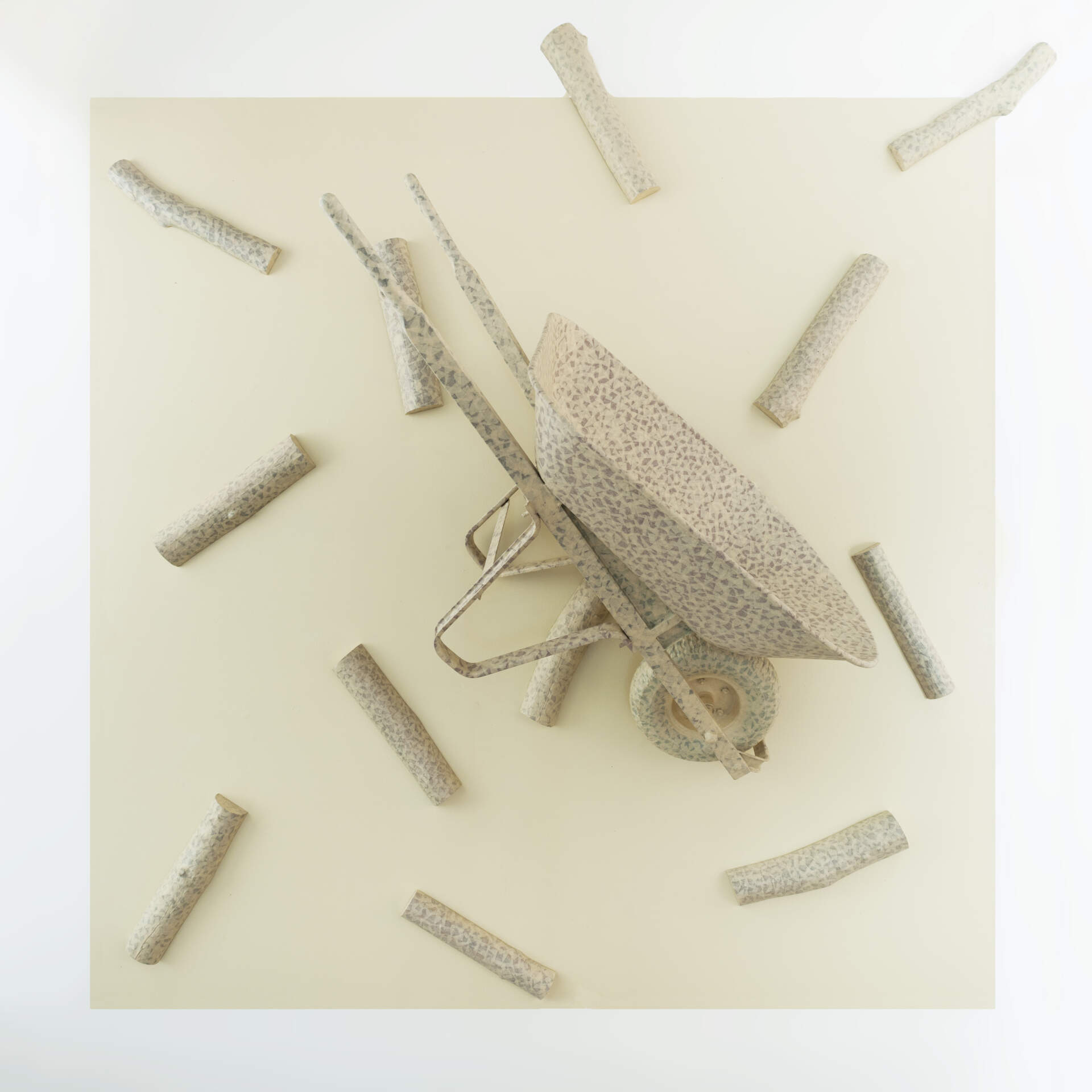
Robert A. Booth b. 1952, Firewood, 2014; paint, tape and mixed media, 90 x 90 x 32 inches; Courtesy of the Artist
The Scrutiny of Objects: Sculptures by Robert A. Booth
Presented in part by the Mary A.H. Rumsey Foundation Endowment
Past
Mar 13, 2015 - Aug 28, 2015
In 1914 the artist Marcel Duchamp began using what appeared to be ordinary manufactured objects to create sculpture. These “readymade” works elevated ordinary objects to the dignity of art[i].
Around the same time the First World War brought new developments in the art of camouflage. Razzle Dazzle techniques were used to confuse attackers in battles at sea. On land, artists painted their own designs onto cannons and embattlements to hide them from enemy attack.
A century later, sculptor Robert Booth uses some if these same techniques to transform everyday objects into works of art. The utilitarian objects included in the exhibition The Scrutiny of Objects: Sculptures by Robert A. Booth are covered with tape, veiling parts of their visual identity and focusing the viewer’s eye on their form. With this act he removes the marks of time and places the objects into a new context, making space for new meaning to emerge.
In an artist’s statement Booth writes:
The familiarity of objects and materials establish expectations of place, purpose, or function. An object's reality, and your understanding of it, exist within a context established by these elements, and are thus defined, interpreted, and appreciated. New information is filtered through the matrix of what we already know.
Booth is Distinguished Teaching Professor and Chair of the Department of Visual Arts and New Media at the State University of New York at Fredonia.